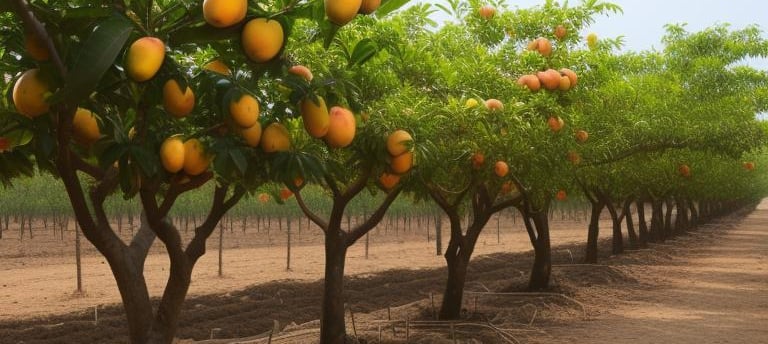From Our Orchard to Your Table: Savor the Exquisite Taste of Alphonso Mangoes!
Establishing and Managing an Alphonso Mango Plantation: A Comprehensive Guide
6/2/20242 min read


Introduction to Alphonso Mangoes
Alphonso mangoes, often hailed as the 'King of Mangoes,' are celebrated for their unparalleled sweetness and rich flavor. Cultivating these prized fruits requires meticulous planning and management. This guide will walk you through the essential steps to establish and manage a flourishing Alphonso mango plantation.
Selecting the Right Location
Choosing an appropriate location is paramount for the successful growth of Alphonso mangoes. These mangoes thrive in tropical and subtropical climates with well-drained, loamy soil. Ensure that the plantation site receives ample sunlight and is shielded from strong winds. The ideal temperature range is between 24°C to 27°C.
Preparing the Soil
Soil preparation is a critical step in establishing an Alphonso mango plantation. Begin by testing the soil to determine its pH level, which should ideally be between 5.5 and 7.5. Enrich the soil with organic matter such as compost or well-rotted manure to enhance its fertility. Proper soil preparation ensures robust root development and nutrient uptake.
Planting Alphonso Mango Trees
To plant Alphonso mango trees, dig holes that are twice the size of the root ball of the saplings. Space the trees at least 10 to 15 meters apart to allow for adequate growth and air circulation. Gently place the saplings in the holes and cover the roots with soil. Water the newly planted trees thoroughly to settle the soil around the roots.
Irrigation and Fertilization
Consistent irrigation is crucial during the initial years of growth. Water the trees deeply and regularly, especially during dry spells. However, avoid waterlogging, which can damage the roots. Apply a balanced fertilizer in the early stages of growth to provide essential nutrients. As the trees mature, switch to a high-potassium fertilizer to promote flowering and fruiting.
Pruning and Pest Management
Pruning is vital to maintain the shape and health of Alphonso mango trees. Remove dead or diseased branches and thin out crowded areas to improve air circulation. Regular pruning also stimulates new growth and enhances fruit production. Implement an integrated pest management strategy to protect your trees from common pests and diseases. Use organic pesticides and beneficial insects to minimize chemical use.
Harvesting and Post-Harvest Care
Alphonso mangoes typically mature and are ready for harvest between May and June. Harvest the fruits when they exhibit a uniform yellow skin color and emit a sweet fragrance. Handle the mangoes carefully to avoid bruising. Post-harvest, store the mangoes in a cool, dry place. Proper storage extends the shelf life and preserves the quality of the fruit.
Conclusion
Establishing and managing an Alphonso mango plantation demands dedication and attention to detail. By selecting the right location, preparing the soil, and adhering to best practices in irrigation, fertilization, pruning, and pest management, you can cultivate a thriving plantation. With patience and care, your Alphonso mango trees will reward you with bountiful harvests of the finest mangoes.
